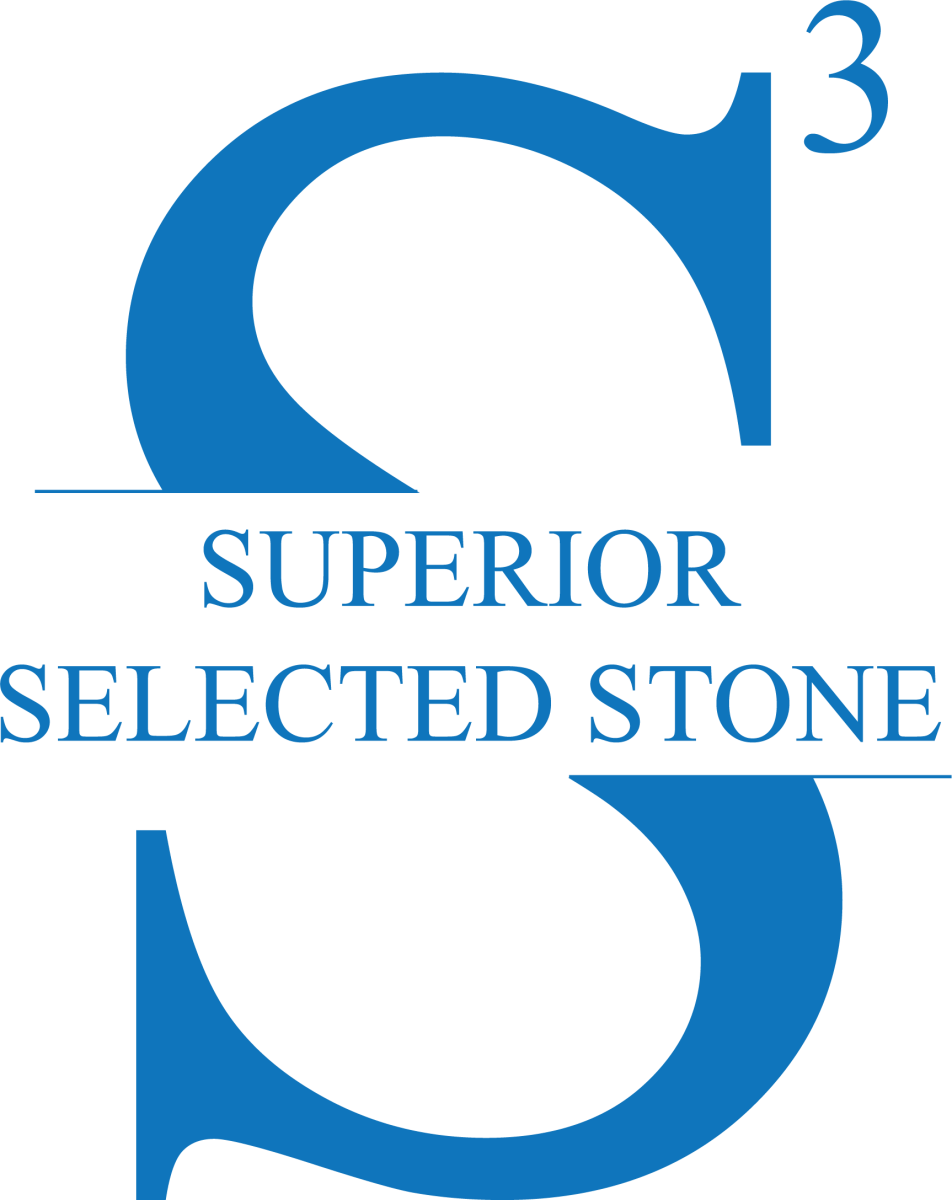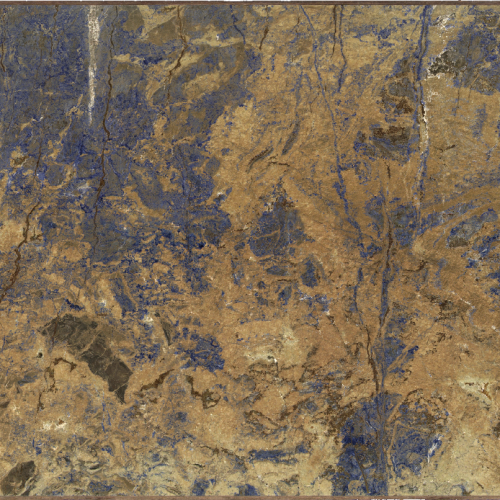Azul Sodalite Granite Slabs
Azul sodalite is a rare blue granite quarried in Bolivia and Brazil. The stone features a deep cobalt blue background with white and silver veining. Composed of calcite, pyrite, and lazulite, this granite displays color intensity comparable to precious gemstones. Limited quarry production and distinctive appearance place azul sodalite in the luxury stone category.
History and Origins
Azul sodalite comes from South American quarries in Bolivia's mineral-rich highlands and select regions of Brazil. Geologists classify it as a Precambrian granite, meaning the stone formed over 540 million years ago under extreme heat and pressure. The mineral sodalite gives the stone its signature blue color, a rare occurrence in natural granite formations.
Brazilian and Bolivian quarries produce small quantities annually, making azul sodalite one of the world's scarcest granite varieties. The limited extraction areas and challenging quarrying conditions contribute to both its rarity and premium pricing. Most slabs measure smaller than standard granite because the mineral deposits occur in compact formations.
Applications and Uses
Azul sodalite performs well in both residential and commercial installations. The stone's hardness rating and low porosity make it practical for high-use surfaces.
Kitchen Applications
Kitchen countertops benefit from azul sodalite's heat resistance and durability. The granite withstands hot pots and daily cutting without damage. Islands and backsplashes in polished finish create focal points in modern and traditional kitchens. The blue tones pair with white cabinetry, stainless steel appliances, and brass fixtures.
Bathroom Installations
Vanity tops in azul sodalite resist water damage better than marble alternatives. The stone works for shower walls, tub surrounds, and floor tiles. Luxury hotels and private residences use it in spa bathrooms where the blue color creates calming spaces.
Flooring and Walls
Entryway flooring in azul sodalite handles foot traffic without showing wear. Wall cladding applications include feature walls in living rooms, hotel lobbies, and retail spaces. The stone's scratch resistance maintains appearance in commercial environments.
Specialty Projects
Pool cladding represents a popular use for azul sodalite. The blue granite complements pool water color while providing slip-resistant surfaces. Yacht interiors, private villas, and high-end restaurants incorporate the stone for dining tables, bar tops, and decorative columns.
Design and Aesthetic Appeal
The visual character of azul sodalite comes from its color composition. Dark blue and cobalt blue form the base, interrupted by white calcite veins and occasional silver pyrite flecks. Black intrusions appear randomly, adding depth. No two slabs match exactly. Vein patterns vary from subtle wisps to bold white strikes crossing the surface.
Color Pairing
Azul sodalite coordinates with neutral palettes. Gray, white, and beige materials balance the stone's intensity. Gold and brass hardware create warm contrast. Dark wood cabinetry grounds the blue tones in traditional settings, while white or light oak suits contemporary designs.
Finish Options
Polished finish produces a glossy surface that deepens the blue color and reflects light. This finish suits countertops and accent walls. Honed finish creates a matte appearance with softer color presentation. Honed surfaces work for floors and walls where glare reduction matters.
Slab Specifications
Standard slab dimensions range from 2500mm x 1500mm to 2900mm x 1900mm. Thickness options include 2cm (3/4 inch) for walls and backsplashes, and 3cm (1 1/4 inch) for countertops and high-stress applications. Larger projects may require multiple slabs, and vein matching becomes critical for seamless installations.
Caring for Azul Sodalite
Maintenance preserves the stone's appearance and protects against damage. Azul sodalite requires less care than marble but benefits from regular attention.
Daily Cleaning
Wipe surfaces with warm water and pH-neutral cleaner. Avoid acidic products including vinegar, lemon juice, and citrus-based cleaners that can dull the polish. Use soft cloths or microfiber mops rather than abrasive scrubbers.
Sealing Schedule
Apply penetrating sealer every 12 to 18 months for countertops. Floor installations need sealing annually in high-traffic areas. The sealer prevents liquid absorption and reduces staining risk. Test sealer on a small area first to verify it won't alter the stone's color.
Stain Prevention
Wipe spills immediately, particularly oils, wine, and coffee. While azul sodalite's low porosity resists staining better than marble, standing liquids can penetrate unsealed surfaces. Use cutting boards and trivets to prevent surface damage from knives and hot cookware.
Order Your Azul Sodalite Slabs Today
Superior Selected Stone maintains inventory of premium azul sodalite granite slabs sourced directly from Brazilian and Bolivian quarries. Our team helps you select slabs with matching vein patterns for your project. We provide detailed specifications, current pricing, and delivery timelines. Contact us now for a project consultation and to view available inventory. Transform your space with one of the world's rarest blue granites.



